The Worm Factory 360 is an eco-friendly composting system that transforms food scraps into nutrient-rich fertilizer using red wiggler worms‚ ideal for sustainable gardening and waste reduction.
1.1. What is the Worm Factory 360?
The Worm Factory 360 is a compact‚ eco-friendly composting system designed to convert food scraps into nutrient-rich fertilizer. Made from recycled plastic‚ it uses red wiggler worms to break down organic waste efficiently. The system includes multiple trays for continuous composting‚ a built-in worm tea collector‚ and a spigot for easy liquid fertilizer extraction. It is ideal for indoor or outdoor use and comes with a comprehensive manual for setup and maintenance.
- Eco-friendly and sustainable composting solution.
- Utilizes red wiggler worms for efficient decomposition.
- Compact design suitable for small spaces.
- Includes user-friendly features for easy operation.
1.2. Benefits of Using the Worm Factory 360
The Worm Factory 360 offers numerous benefits‚ including significant waste reduction and nutrient-rich fertilizer production. Its compact design makes it ideal for small spaces‚ while the built-in worm tea collector provides an additional source of liquid fertilizer. The system is easy to maintain‚ odor-free‚ and suitable for both indoor and outdoor use. It promotes sustainable gardening practices and helps reduce landfill waste‚ making it an eco-friendly choice for homeowners and gardeners alike.
- Reduces food waste effectively.
- Produces nutrient-rich compost and liquid fertilizer.
- Compact and space-efficient design.
- Low maintenance and odor-free operation.
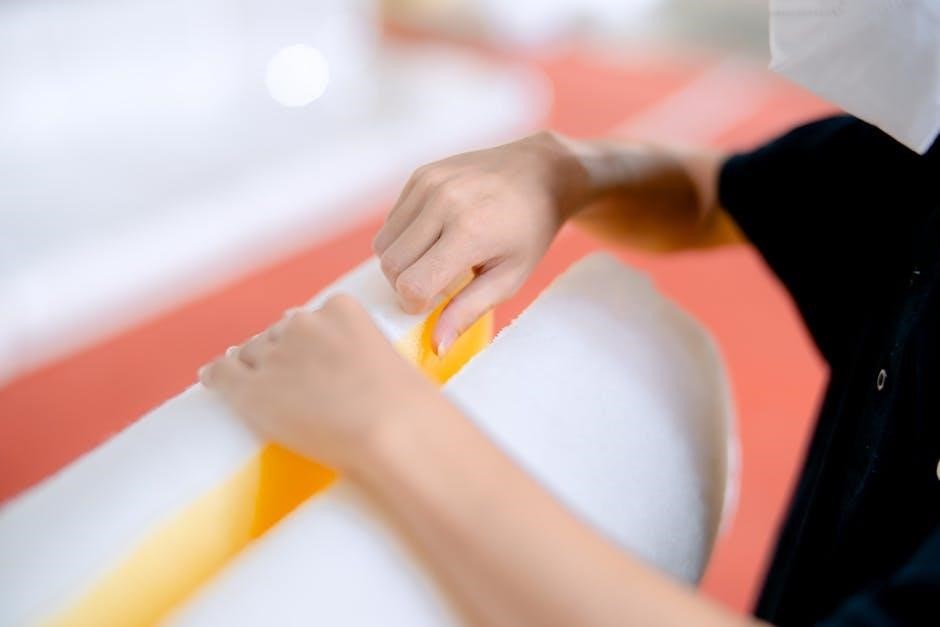
System Components
The Worm Factory 360 includes multiple stacking trays‚ a base with a spigot‚ a worm tea collector tray‚ and a comprehensive instruction manual for easy setup and management.
2.1. Overview of the Worm Factory 360 Parts
The Worm Factory 360 consists of multiple stacking trays‚ a base with a spigot‚ a worm tea collector tray‚ and a detailed instruction manual. The trays are designed to be stackable‚ allowing for easy expansion as composting needs grow. Made from durable‚ recycled plastic‚ the system is both eco-friendly and long-lasting. The base and spigot facilitate easy draining of worm tea‚ while the manual provides step-by-step guidance for setup‚ maintenance‚ and troubleshooting.
2.2. The Role of Each Component
The Worm Factory 360’s components are designed for efficient composting. The stackable trays hold bedding‚ worms‚ and food scraps‚ allowing worms to move upward as they compost. The base collects worm tea‚ a nutrient-rich liquid fertilizer‚ through the spigot. The instruction manual guides users through setup‚ maintenance‚ and troubleshooting‚ ensuring optimal performance. Each part works together to simplify the composting process and maximize nutrient production for gardening needs.
2.3. Built-in Worm Tea Collector and Spigot
The Worm Factory 360 features a built-in worm tea collector and spigot‚ designed to harvest nutrient-rich liquid fertilizer. This system allows for easy draining of worm tea‚ which is packed with beneficial microbes and nutrients. The spigot provides convenient access to this natural fertilizer‚ perfect for feeding plants. Regular draining ensures proper moisture levels in the composting trays‚ promoting healthy worm activity and efficient composting. This feature simplifies maintenance and maximizes the system’s productivity.
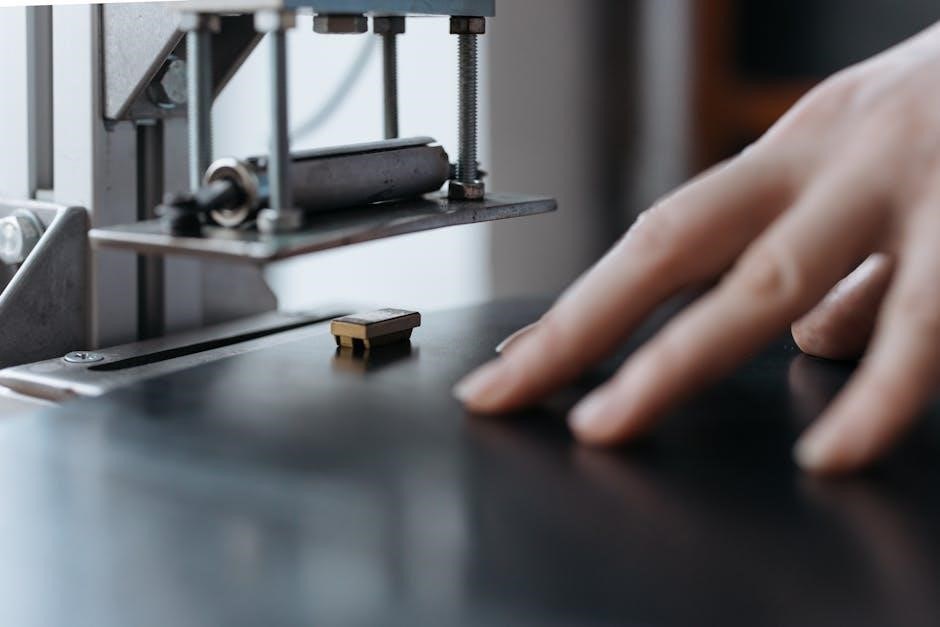
Setting Up the Worm Factory 360
Setting up the Worm Factory 360 involves unboxing‚ assembling trays‚ adding bedding material‚ and preparing the system for composting worms. Follow the manual for step-by-step guidance to ensure proper installation and functionality.
3.1. Unboxing and Initial Assembly
Begin by carefully unboxing the Worm Factory 360 components‚ including the base‚ trays‚ lid‚ and worm tea collector. Follow the manual’s step-by-step instructions to assemble the unit. Start with the bottom tray‚ ensuring it is properly aligned and secured. Add the provided bedding material to the first tray‚ creating a comfortable environment for the worms. The built-in spigot and collector simplify future maintenance. Refer to the included guide for detailed assembly instructions.
3.2. Adding Bedding Material
Start by adding bedding material‚ such as shredded newspaper or coconut coir‚ to the bottom tray. Dampen the material with water until it’s moist but not soggy. The bedding provides worms with a comfortable environment and aids in airflow. Fill the tray with 4-6 inches of bedding‚ fluffing it to ensure proper aeration. This step is crucial for creating a habitable space for the worms and promoting efficient composting. Follow the manual’s guidelines for optimal results.
3.3. Preparing the System for Worms
After adding bedding material‚ ensure the system is ready for worms by checking moisture and pH levels. The bedding should be damp but not soaked‚ with a pH between 6.5 and 7.5. Use a spray bottle to adjust moisture if needed. Allow the bedding to sit for 24 hours to stabilize before introducing worms. This step ensures a welcoming environment for the worms‚ promoting healthy activity and efficient composting from the start.

Adding Worms to the System
The Worm Factory 360 requires composting worms‚ typically red wigglers‚ to process organic waste into fertilizer. Start with 1 pound of worms for optimal productivity.
4.1. Choosing the Right Type of Worms
Red wiggler worms (Eisenia fetida) are the most suitable for the Worm Factory 360 due to their ability to efficiently process organic waste. They thrive in composting environments and are recommended for vermicomposting systems. Other worm species‚ such as nightcrawlers‚ are less effective in this setup. Start with 1 pound of worms for optimal performance‚ as specified in the manual. This ensures a healthy‚ productive worm population for composting success.
4.2. Introducing Worms to the Worm Factory 360
Start by gently placing the worms on top of the bedding material in the bottom tray. Ensure the environment is moist but not soaked‚ as red wigglers thrive in damp conditions. Add 1 pound of worms (approximately 1 cup) to begin‚ as recommended in the manual. Avoid sudden movements to prevent stressing the worms. Once added‚ they will naturally burrow into the bedding to start composting food scraps efficiently.
4.3. Recommended Quantity of Worms
The Worm Factory 360 manual recommends starting with 1 pound of worms‚ approximately 1 cup‚ to ensure efficient composting. Red wigglers are ideal for this system due to their high consumption rate. This quantity aligns with the capacity of the bottom tray and allows for optimal composting without overloading the system. Adding too many worms initially can lead to overcrowding‚ while too few may slow down the process. Adjust as needed for scalability.
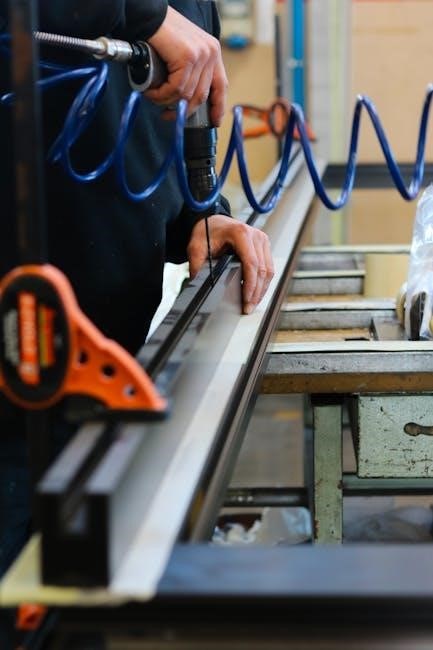
Managing the Worm Factory 360
Monitor moisture‚ airflow‚ and pH levels to ensure optimal worm health and composting efficiency. Regularly add food scraps and bedding to maintain a balanced ecosystem.
5.1. Feeding the Worms
Feed the worms with organic kitchen scraps like fruit peels‚ vegetable leftovers‚ and coffee grounds. Avoid meat‚ dairy‚ and oily foods to prevent pests and odors. Add bedding material‚ such as shredded paper or coconut coir‚ to maintain moisture and aeration. Feed in small amounts‚ ensuring the worms can consume the food within a few days. Overfeeding can lead to mold and unpleasant smells. Always bury food scraps under the bedding to promote efficient decomposition and healthy worm activity.
5.2. Monitoring Moisture and pH Levels
Maintain optimal moisture by ensuring the bedding feels like a damp sponge; Avoid overwatering‚ as it can lead to mold. Monitor pH levels‚ as worms thrive in a slightly acidic to neutral environment (6.5–7.5). Use a pH test kit to check regularly. If pH levels are too low‚ add bedding material like shredded paper or coconut coir. High pH can be balanced with peat moss. Regular monitoring ensures a healthy environment for the worms to process organic matter efficiently.
5.3. Maintaining Proper Airflow
Maintaining proper airflow is crucial for the health of your worms and the composting process. The Worm Factory 360 is designed with built-in air ventilation to ensure oxygen circulation. Keep bedding material loose and avoid overfilling trays‚ as this can block airflow. Regularly check for any blockages or dense layers that might restrict air movement. Proper airflow prevents anaerobic conditions‚ which can lead to unpleasant odors and harm the worms. Ensure the system remains well-ventilated for optimal composting efficiency.
5.4. Expanding the System with Additional Trays
The Worm Factory 360 is designed to expand as your composting needs grow. Additional trays can be added on top of the existing system‚ allowing more space for waste and worms. Simply place a new tray‚ add bedding material‚ and let the worms migrate upward. This modular design makes it easy to increase compost production while maintaining efficiency. Expanding the system is a great way to handle larger amounts of organic waste and produce more nutrient-rich compost for your garden.
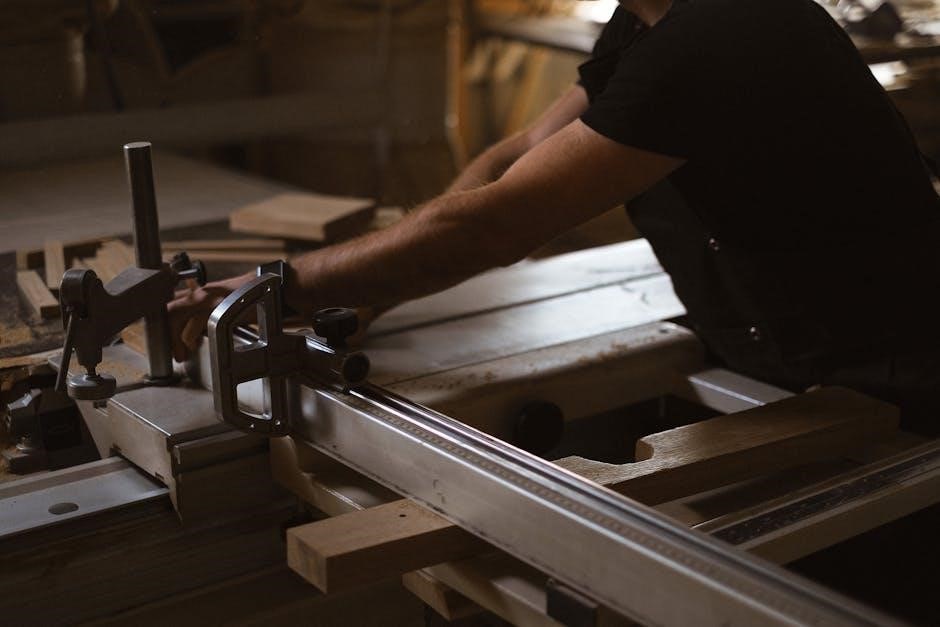
Troubleshooting Common Issues
Address pests‚ odors‚ and worm health by adjusting moisture‚ airflow‚ and food supply. Regular monitoring ensures a balanced system and prevents common composting challenges.
6.1. Pests and Unwanted Odors
Pests like fruit flies or unwanted odors often arise from excess moisture or overfeeding. Ensure proper ventilation‚ balance food scraps‚ and maintain dry bedding. Regularly inspect for pests and remove decaying material. Refer to the manual for guidance on managing these issues effectively. Proper airflow and moisture control are key to preventing odors and infestations‚ ensuring a healthy composting environment for your worms.
This section provides essential tips to keep your system pest-free and odor-controlled.
6.2. Worms Not Eating or Not Producing Compost
Worms may stop eating due to overfeeding‚ excess moisture‚ or poor airflow. Check for proper ventilation and ensure bedding is not too wet. Avoid overloading with food scraps and maintain a balanced diet for the worms. If compost production slows‚ inspect for pests or contaminants. Refer to the manual for solutions to restore their activity and productivity. Addressing these issues promptly ensures healthy worm function and consistent compost output.
Regular monitoring helps prevent such problems.
6;3. Leaks or Drainage Problems
Leaks or drainage issues in the Worm Factory 360 often result from improper assembly or blockages. Check the spigot and worm tea collector for clogs and ensure all trays are securely aligned. Tighten any loose connections and verify the system is level. If leaks persist‚ inspect for damaged parts and replace them as needed. Regular maintenance and following the manual’s guidelines can prevent such issues and ensure smooth operation.
Addressing these problems early prevents further complications.

Harvesting Compost
Harvesting compost from the Worm Factory 360 involves collecting nutrient-rich worm castings and worm tea‚ which enriches soil and promotes plant growth.
7.1. When to Harvest the Compost
The compost is ready to harvest when it appears as a uniform‚ dark‚ earthy material with a crumbly texture. This typically occurs after 2-3 months‚ depending on feeding frequency and worm activity. Check by gently digging into the top tray; if most of the bedding is converted and you see few scraps remaining‚ it’s time to collect the nutrient-rich castings. Ensure the material is moist but not soggy before proceeding with the harvesting process.
7.2. How to Separate Worms from Compost
To separate worms from compost‚ stop adding food for 1-2 weeks to allow the worms to consume remaining scraps. Use a bright light to encourage worms to burrow deeper. Scoop out the top compost layer‚ transferring it to a new tray. Leave the worms in the lower section. Repeat this process‚ gradually moving all worms to a fresh tray while collecting the finished compost. This method ensures minimal disturbance to the worms while harvesting their nutrient-rich castings.
7.3. Using the Compost in Your Garden
The compost produced by the Worm Factory 360 is a nutrient-rich soil amendment perfect for improving soil structure and plant health. Mix it into garden beds or potting soil to enhance drainage‚ aeration‚ and fertility. Use it as a top dressing for lawns or plants‚ or incorporate it into seed starting mixes. The compost is safe for all plants‚ including edibles‚ and promotes healthy root development and robust growth. Apply 1-2 inches around plants or mix 10-20% into potting mixes for optimal results.

Accessories and Additional Resources
The Worm Factory 360 comes with a comprehensive manual‚ quick setup guide‚ and bedding materials. Additional resources include online support and community forums for troubleshooting and tips.
8.1. Recommended Bedding Materials
Bedding materials like shredded newspaper‚ cardboard‚ peat moss‚ and coconut coir are essential for maintaining moisture and airflow. These options are organic‚ easy to source‚ and promote a healthy environment for worms. The manual provides a detailed list of recommended bedding materials and guidance on preparing them for optimal composting efficiency.
8.2. Where to Find Replacement Parts
Replacement parts for the Worm Factory 360 can be found on the official manufacturer’s website or through authorized retailers. Online marketplaces like Amazon also carry compatible components. Additionally‚ the manual includes a parts list‚ and customer support can assist with locating specific items. Always ensure parts are genuine to maintain system performance and warranty validity.
8.3. Online Support and Community Forums
The Worm Factory 360 is supported by extensive online resources‚ including a detailed manual and instructional guides. Community forums and social media groups offer tips‚ troubleshooting advice‚ and shared experiences from experienced users. The official website provides access to downloadable manuals‚ while YouTube channels feature setup tutorials. Engaging with these platforms ensures optimal use and addresses common queries effectively.
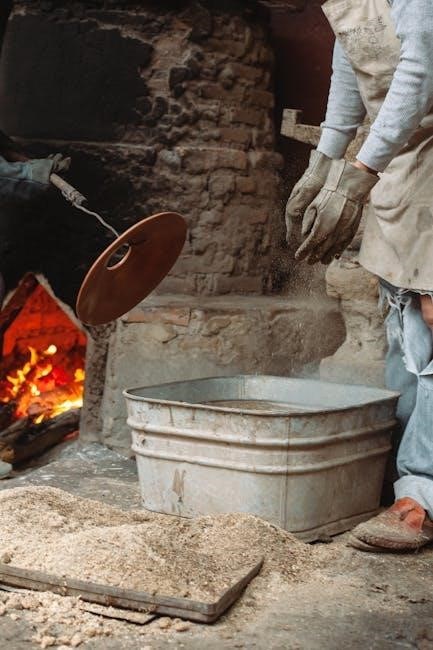
Environmental Benefits
The Worm Factory 360 reduces food waste‚ converts scraps into nutrient-rich fertilizer‚ and promotes sustainable gardening‚ supporting a greener planet and environmentally conscious living practices.
9.1. Reducing Food Waste
The Worm Factory 360 helps minimize food waste by converting kitchen scraps into nutrient-rich compost. It processes organic materials efficiently‚ reducing landfill contributions and lowering greenhouse gas emissions. By composting food waste‚ users decrease their environmental footprint and create a valuable resource for gardening. This system encourages sustainable practices‚ making it easier to recycle food waste and promote eco-friendly living. It’s a practical solution for households aiming to reduce waste and support a healthier planet.
9.2. Creating Nutrient-Rich Soil Amendment
The Worm Factory 360 transforms organic waste into a nutrient-rich compost perfect for gardening. By processing kitchen scraps and yard trimmings‚ it produces a natural soil amendment. Red wiggler worms break down waste into a dark‚ earthy compost packed with micronutrients. This fertilizer enhances soil structure‚ boosts plant growth‚ and supports healthy root development. The compost is rich in nitrogen‚ phosphorus‚ and potassium‚ making it ideal for flowers‚ vegetables‚ and houseplants‚ promoting vibrant and thriving gardens.
9.3. Promoting Sustainable Gardening Practices
The Worm Factory 360 encourages eco-friendly gardening by converting kitchen scraps into nutrient-rich compost. This sustainable method reduces landfill waste and dependence on chemical fertilizers. By recycling organic matter‚ gardeners can create a natural‚ healthy soil amendment that supports plant growth. This practice aligns with environmentally conscious values‚ promoting organic gardening and reducing the carbon footprint. It also fosters a deeper connection to the environment‚ making it easier for homeowners to adopt sustainable living practices and support local food systems.

Best Practices for Long-Term Use
Regular maintenance‚ proper feeding‚ and monitoring conditions ensure optimal worm health and compost production. Consistent care extends system longevity and maximizes its environmental benefits effectively.
10.1. Regular Maintenance Schedule
Regular maintenance ensures the Worm Factory 360 operates efficiently. Check moisture levels weekly‚ ensuring bedding stays damp but not soggy. Monitor pH by avoiding excessive citrus or onions. Maintain airflow by stirring bedding gently. Feed worms every 7-10 days‚ adding organic scraps gradually. Drain worm tea regularly to prevent overflow. Clean the spigot and collector tray monthly. Replace bedding as needed to sustain a healthy environment for worms and compost production.
10.2. Avoiding Common Mistakes
Avoid overfeeding‚ as it can lead to pests and odors. Don’t add too many acidic foods‚ as they can lower pH levels. Ensure proper airflow by stirring bedding and leaving some space. Avoid drowning the system with excessive liquids‚ which can kill worms. Don’t ignore moisture checks‚ as dry conditions harm worms. Regularly drain worm tea to prevent overflow. By addressing these issues‚ you can maintain a healthy and productive Worm Factory 360 system.
10.3. Optimizing Worm Health and Productivity
Ensure worms thrive by providing a varied diet rich in organic matter. Maintain consistent moisture levels‚ avoiding extreme dryness or sogginess. Provide adequate airflow by stirring bedding regularly and ensuring proper drainage. Monitor temperature‚ keeping it between 55-77°F for optimal activity. Avoid adding citrus‚ onions‚ or meat‚ as these can harm worms. Regularly check for pests and separate compost to encourage worm productivity and a healthy system. Proper care ensures efficient composting and robust worm health.
The Worm Factory 360 is a highly efficient‚ eco-friendly solution for composting food waste into nutrient-rich fertilizer‚ promoting sustainable gardening and reducing environmental impact effectively.
11.1. Summary of Key Points
The Worm Factory 360 is a user-friendly‚ eco-friendly composting system that converts food scraps into nutrient-rich fertilizer using red wiggler worms. It includes a detailed manual guiding setup‚ maintenance‚ and troubleshooting. The system promotes sustainable gardening by reducing waste and creating natural soil amendments. Proper management ensures optimal worm health and compost production‚ making it an ideal solution for eco-conscious gardeners aiming to enhance soil fertility while minimizing environmental impact effectively year-round.
11.2. Final Tips for Success with the Worm Factory 360
For optimal results‚ consistently monitor moisture and pH levels‚ feed worms appropriately‚ and harvest compost when it’s dark and crumbly. Regularly clean and maintain the system‚ and refer to the manual for troubleshooting common issues. By following these guidelines and staying committed‚ you’ll maximize worm health and compost production‚ ensuring a sustainable and eco-friendly gardening experience. Happy composting!
